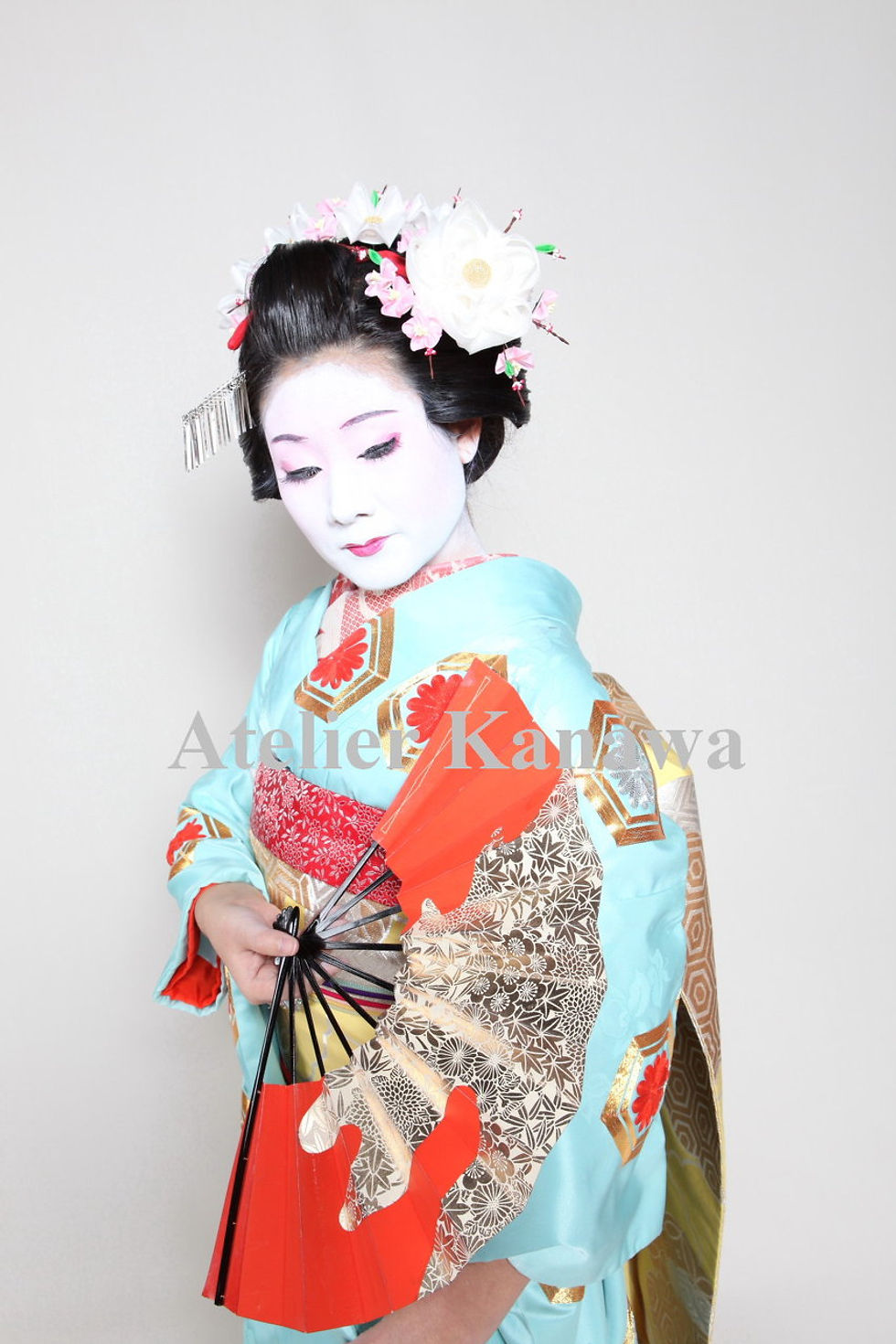
Japanese Earth Friendly studio by a Certified Kimono Consultant, Kimono Model/Photographer, Edo Tsumami Kanzashi Artisan, and Shinto Priestess.


















Many people seem to have a hard time distinguishing Maiko / Hangyoku, Geiko / Geisha, and Oiran.
Maiko is apprentice Geiko. Long time ago, young girls between 9-12 years old begun to learn to become Maiko, but today, due to the Labor Standards Act and Child Welfare Act, they must be at least graduating from junior high school.
Miko add to the fun to banquet by singing, dancing, and playing Shamisen. Besides luxurious Kimono and Obi they wear beautiful hair ornament called Hana-Kanzashi which is the type of Tsumami Kanzashi. They change Hana-Kanzashi every month based on the seasonal flowers / plants of the months. Those girls who are in the same status in Tokyo area are called Hangyoku, meaning "half payment" of Geisha's payment.
Geiko is advanced Maiko after five years of training. They entertain clients at the banquet by showing a variety of art such as singing, dancing, and playing Shamisen. Both Maiko and Geiko are registered in "Okiya" in "Hana-machi" in Kyoto, such as Gion, and sent to "Ocha-ya" where the banquets are held.
Geisha means a person who entertains with her artistic skills. GEI means art, SHA means a person.They are the same as Geiko.
The root of Geisha goes back to Shira-byoshi, Yujo and Miko.
Shira-byoshi was mainly female and children who dressed up as male with White attire and Katana. They sung / danced without any instrument but with only the hand rhythm. Having access to the mansions of nobles, naturally led them to have relationships with nobles.
Yujo was the female who entertained males by dancing and so on at the banquet, but occasionally with sexual services.
Miko is a shrine maiden / a virgin consecrated to a deity who dance to convey oracles from deities.
Eventually Shira-byoshi disappeared due to war period. Aged Miko who had to leave their field begun to sing, dance, play Shamisen at Mizu-Chaya for visitors. Later they entertained visitors of the shrines / temples by imitating Kabuki. This custom was handed down to Edo (Toyko of today) and gradually formed the style of Geisha.
When Edo period begun, they were banned to perform, due to imitating Yakuza and emphasizing too much of female sexuality.
Therefore the Tokugawa Shogunate approved Yukaku, a pleasure quarters / red-light district, to segrigate the region for entertainment and prostitution. The Tokugawa shogunate restricted prostitution in Yukaku. They chose either to live inside Yukaku or live as entertainer outside of it.
Today, Geisha add to the fun to banquet by singing, dancing, and playing Shamisen. Even though Geisha system was constructed in a licensed quarters, they are strictly distinguished from prostitute. For example, they wear Tabi socks while courtesans do not wear them. They hold the opening side of Kimono to the left so that the men are not able to slide their hands into their Kimono. This is called Hidari-Duma. Hidari-Duma means that you will provide strictly entertainment only but not any sexual services.
Oiran is the courtesan in a licensed quarters, with education of classical scholar, calligraphy, tea ceremony, a thirty-one syllable Japanese poem, Shamisen, the game of go, and also entertainment accomplishment. They were considered a type of Yujo, but many became celebrities of their times because of their art and fashion. Among Oiran, Tayu was the highest rank Oiran who achieved the highest skills of all Japanese art. Only the wealthiest and highest ranking could become a patron for Tayu.